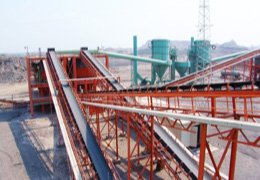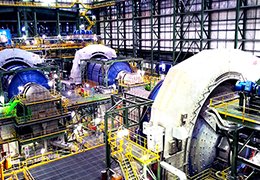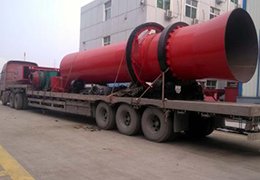Like many other industries, the pace of change in the global mining and metals space seems to have accelerated significantly in the last few years.
We used to talk about trends whereas now it seems to be all about volatility.
As a result, we don't have as long to think about the impact of change and to evaluate our options.
In part this is maybe due to the instant availability of information, but it's also due to companies becoming more efficient and making faster decisions.
So, what changed in 2017 and what did we learn from the changes?
By Greg McNab, Global Head of Mining, and Morne van der Merwe, Johannesburg Managing Partner - Baker McKenzie
China continued to play a role in major commodity markets, no surprise there.
But it wasn't the same old discussion of what raw commodities markets China was moving. Also, China now has a few other roles to play in our industry, including President Xi's vision for the One Belt - One Road strategy.
Further, South Africa is one of China's largest trading partners in Africa and has solidified this position with significant encouragement for Chinese investment into various industries, including mining, beneficiation and manufacturing.
This bodes well for the South African mining sector in 2018, especially if regulatory developments provide clarity and certainty.
Closing at over $1 300 an ounce, gold continued to be a source of interest to investors who weren't distracted by Bitcoin in 2017.
And surprisingly, the cheapest places to mine gold based on 2017 information were Russia, Philippines, Indonesia, Turkey and Peru (source: Mining.com).
Heading into 2018, the world's 50 largest listed mining firms are worth a collective $896 billion, adding $141 billion in combined market capitalisation year-to-date, with the bulk of those gains recorded since July 2017 (source: Mining.com).
In terms of investment in the mining sector in South Africa, while there is continuing unpredictability in the mining industry as a result of persistent regulatory uncertainty, labour unrest and inadequate infrastructure, the different global headwinds could drive foreign direct investment in mining in Africa and, thereby, the development of infrastructure.
While the concept of "big data" has been around for a while now, 2017 seemed to bring an increased focus for some of our clients on what it could be used for and how it could be better collected.
We expect 2018 to bring continued emphasis on data collection, but also increased attention on issues such as employee privacy, cyber security and data transfer issues.
Particularly when mining companies begin to do what other industries have done for a while and outsource their IT functions.
Perhaps the buzz word for 2017 (and maybe even 2016), was innovation. Innovation means different things to different people in different industries, but in the mining industry, We think it means simply being smarter about the things we do.
Some things the industry has no control over, such as where an asset physically is, what the government regime surrounding it is or what weather conditions await extraction efforts. But there are lots of opportunities in other areas that can offer changes to established procedures.
To harness these opportunities, Baker McKenzie recently launched the Whitespace Legal Collab, part of our global innovation programme, which aims to address changing client needs, new industry dynamics, and the broader role of digitization across the economy.
Not letting go of innovation just yet, when looking at 2017, the five innovations that grabbed attention were the potential for 3D printing, mining simulators, drones, 3D mapping and the impact of alternative energy (everything from remote solar power supplies to battery operated mine equipment).
Lots to watch in these spaces in 2018.
Some mining companies continue to show they are interested in providing people with a place where they want to work and feel valued.
Initiatives like Glencore's MATES in Mining, a suicide prevention resource in Australia, and a global trend to correct disparities in gender diversity are examples of our industry not waiting to be told to do something.
Labor conditions and relations will continue to be a gating issue for miners. Disputes instantly get social and traditional media attention and governments are putting increased pressure on each other to adopt progressive workplace policies.
In most cases one has two hours to react to a significant event and control the message. After that, you are going to be reacting to everyone else's message. Put the right policies in place so your company isn't caught off guard.
Jurisdictions around the world continue to find ways to work with indigenous communities while securing supply of valuable commodities.
In South Africa, working with and empowering indigenous communities is promoted by the Broad-Based Socio Economic Empowerment Charter for the Mining and Minerals Industry, which places transformative and socio-economic contribution obligations on mining companies.
The South African mining industry is hoping for clarity with regards to the 2017 Mining Charter, which was received with widespread controversy last year but has since been suspended pending the outcome of court challenges.
Much of the criticism surrounding the 2017 Mining Charter has been around the increase in compliance thresholds for black ownership in companies holding mining or other rights from 26% to 30%; management and control of the holders of mining and prospecting rights in South Africa and the "once empowered, always-empowered" principle.
While the South African Government's efforts to promote black economic empowerment and rapid growth in the economy are encouraged by all stakeholders in the mining industry, there is concern that if this process is not carefully managed and properly implemented, it could have the potential to undermine investment into the mining sector and thereby stifle its ability to grow.
Further afield, the Tokyo Electric Power Company (TEPCO) has received approval to operate nuclear reactors for the first time since the Fukushima disaster in 2011.
Japan’s Nuclear Regulation Authority (NRA) gave Tepco the go ahead to restart reactors at its Kashiwazaki-Kariwa nuclear power plant following public hearings.
This is an important development for both Japan and other countries that support the industry.
That wasn't the only development that will likely impact the uranium markets. Just like that, uranium markets were shocked late in the year when Kazakhstan’s state-owned Kazatomprom announced in December 2017 that it would reduce its output of U3O8 by 20% or 11 000 tons over the next three years beginning in January 2018.
The electric vehicle industry continued to hum along. It's impossible to talk about electric vehicles without considering lithium, copper and cobalt.
Copper had a great run, but not for all the reasons predicted. For example, the expected U.S. infrastructure boom didn't result in increased copper demand, but labor issues did cut back production.
The race to acquire the right lithium assets doesn't seem to be slowing, with China taking a leading role. Countries like Chile are actively assessing how they can get a piece of the supply pie.
China not only has a role in the supply side, but offers one of the world's largest markets for these vehicles. When you see pronouncements requiring the Communist Party to use new energy vehicles, you know they are taking it seriously.
Ranking in the big leagues of mining power house countries, Brazil made it into the headlines yet again in 2017. At the end of 2017, mining companies operating in Brazil reacted to news that the government had started the approval process for a bill that hikes royalties for iron ore and gold.
In part to help further strengthen ties between two global mining powerhouse countries, Export Development Canada officially established a presence in Australia as is looking for even more ways to work with companies working in these two countries.
Finally, there are a couple of things that are going to have an undetermined impact in the mining industry in 2018:
As legalization of both medical and recreational marijuana rolls out around the world, it brings with it a whole suite of mine workplace issuers for operators.
Drones 2.0. Currently used in the mining sector for positive things like remote site checking, the rules around operation haven't kept up in most jurisdictions. For example, can environmental groups use drones to monitor your mine property? How will the use of drones by employers interact with employee rights, which have typically resisted employers filming employees.
To sum up, 2018 will be an interesting year for the global mining sector.
Aside from the usual supply and demand issues, we will have a number of developments in the resource nationalization, innovation and workplace privacy and safety areas.
Each of the issues noted above brings interesting business and legal challenges.
They will require us to think and act differently and adapt, all at a pace which we haven't seen before.
Feature image credit: Wikimedia













